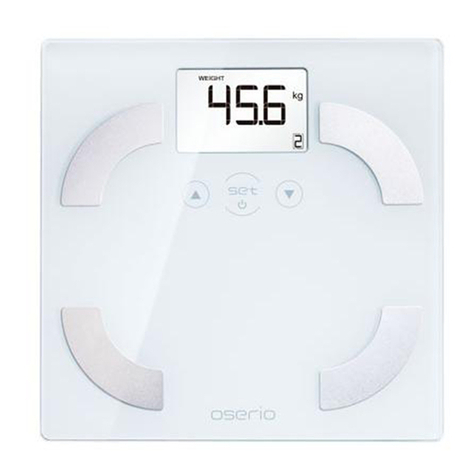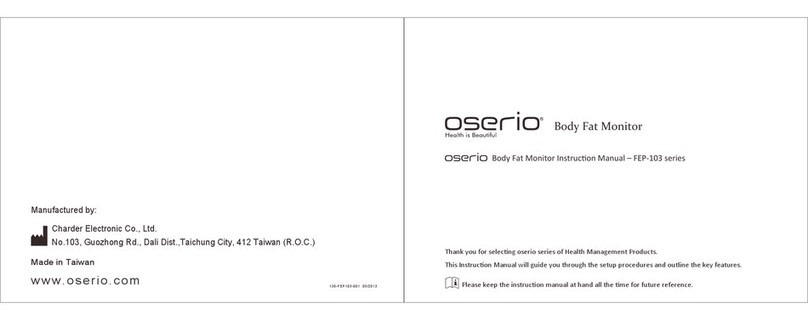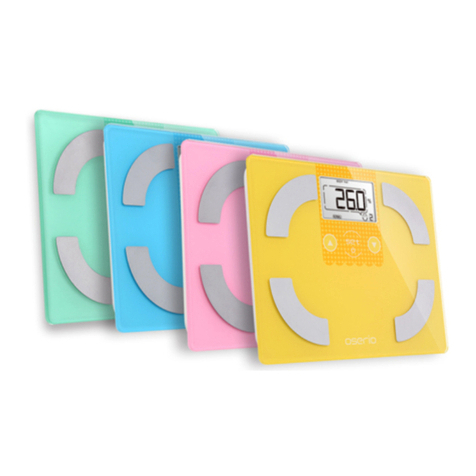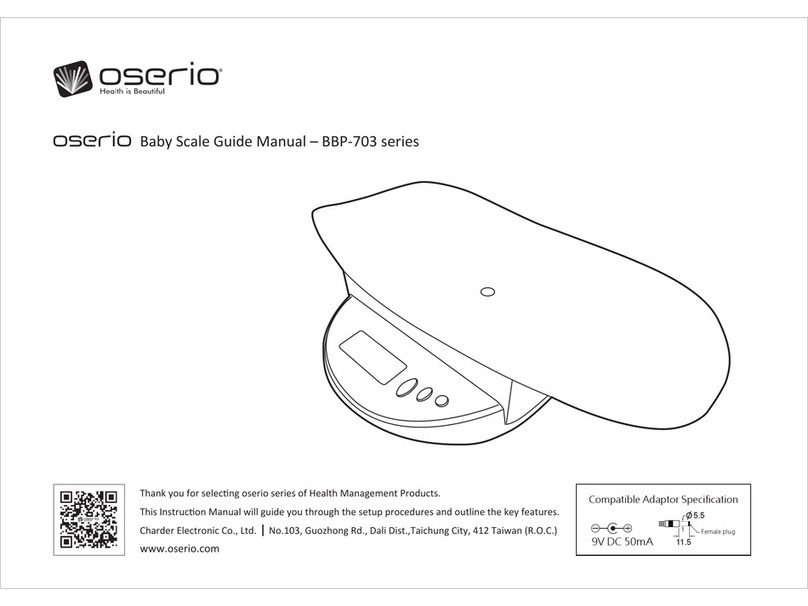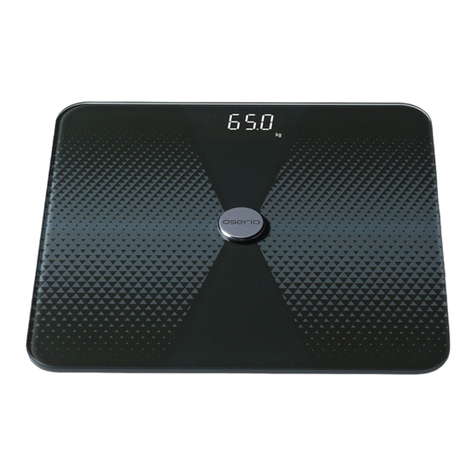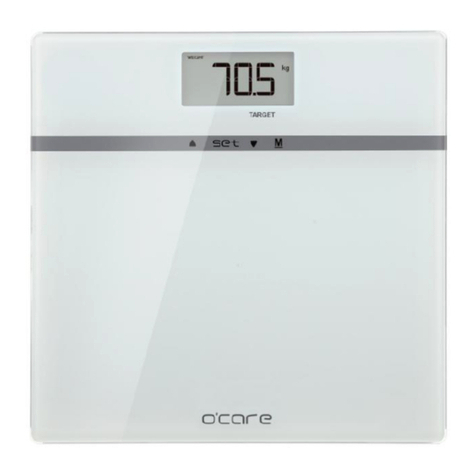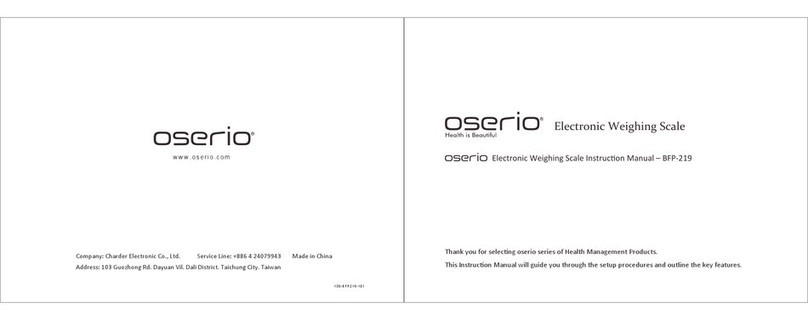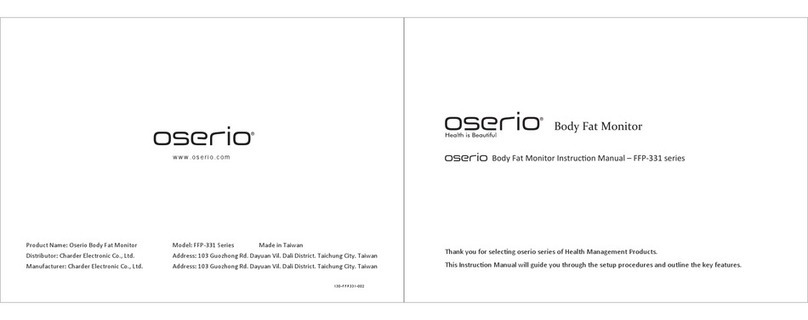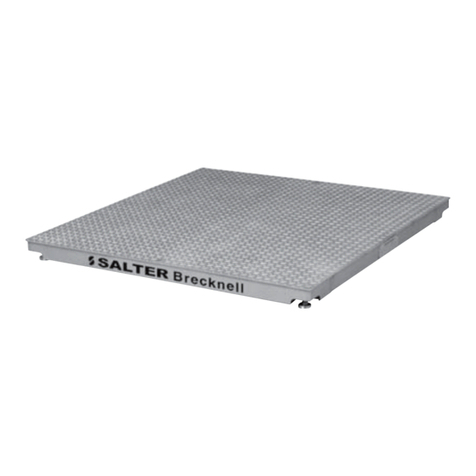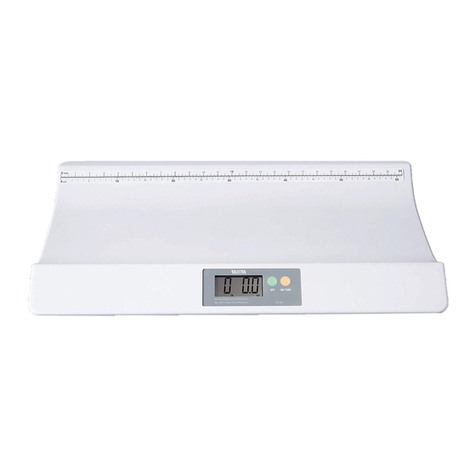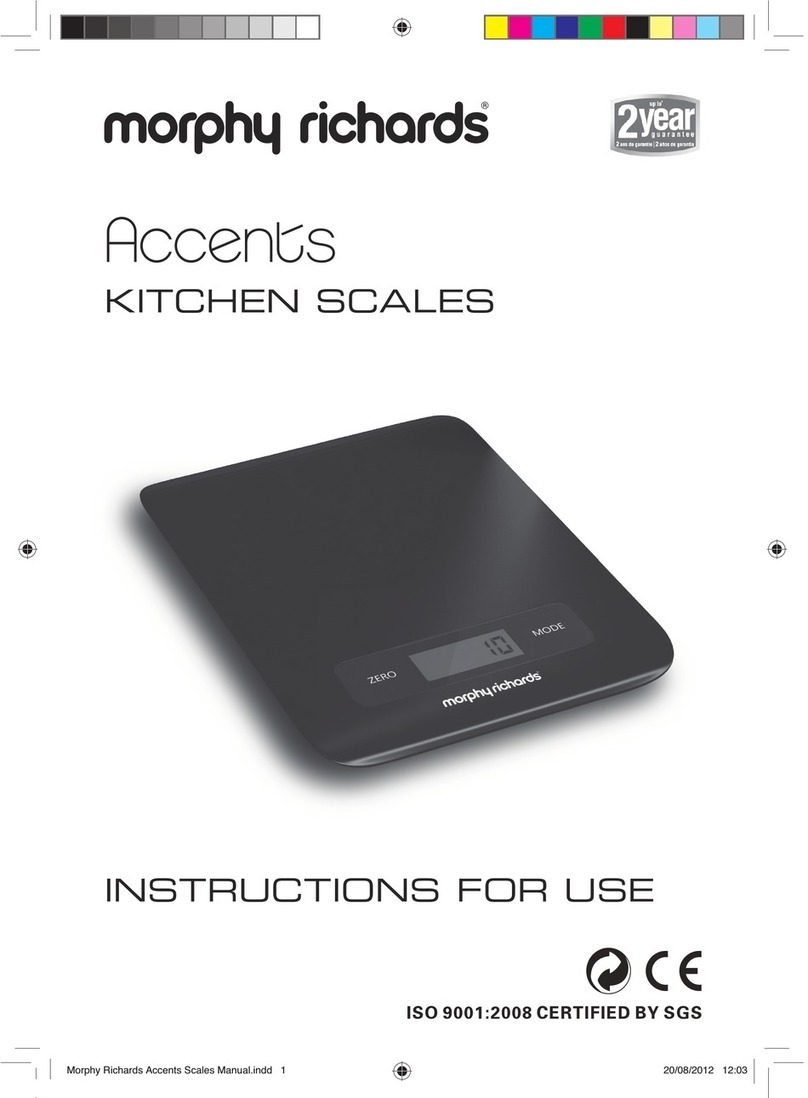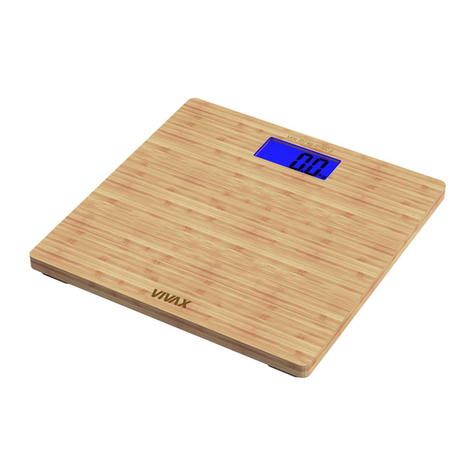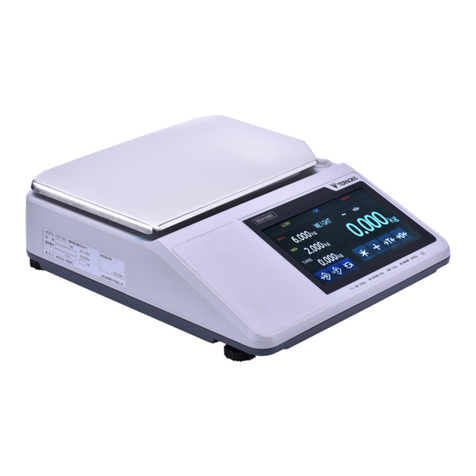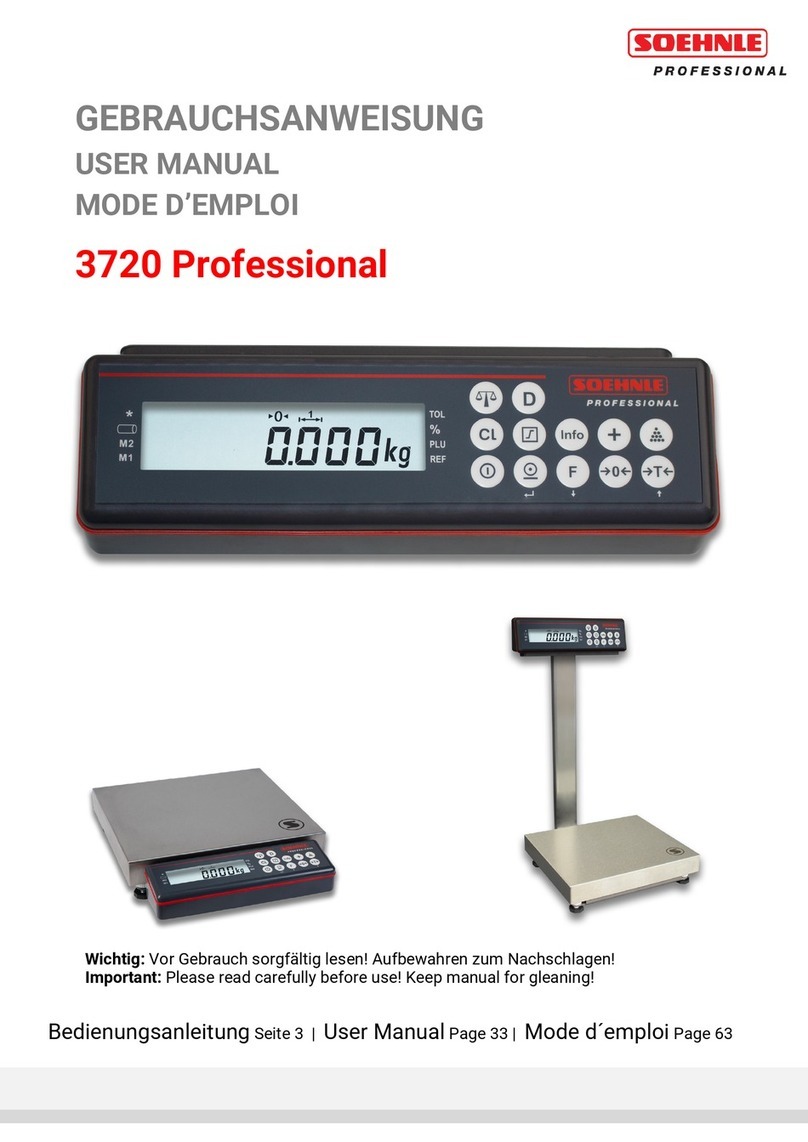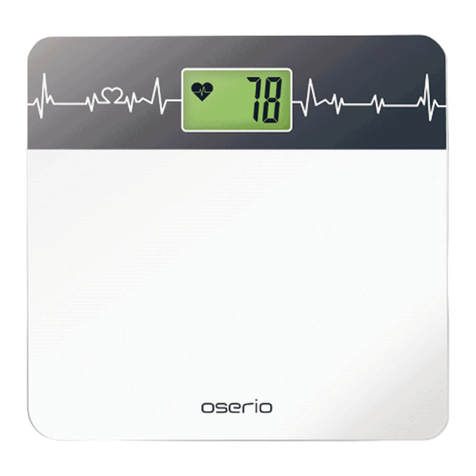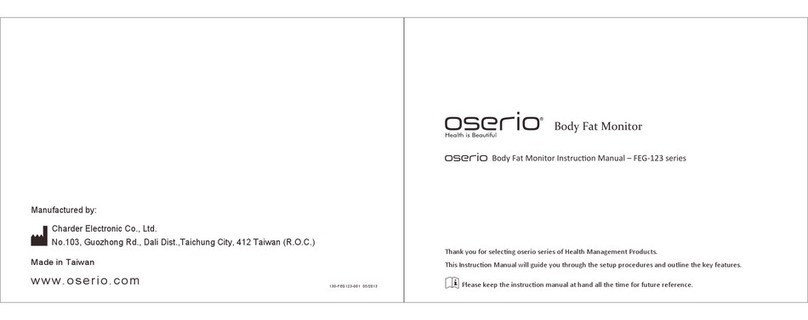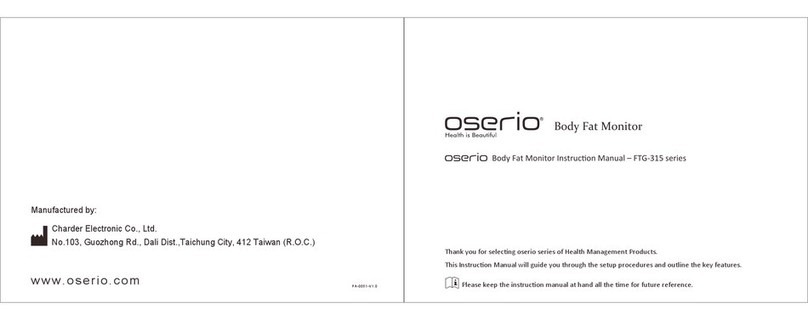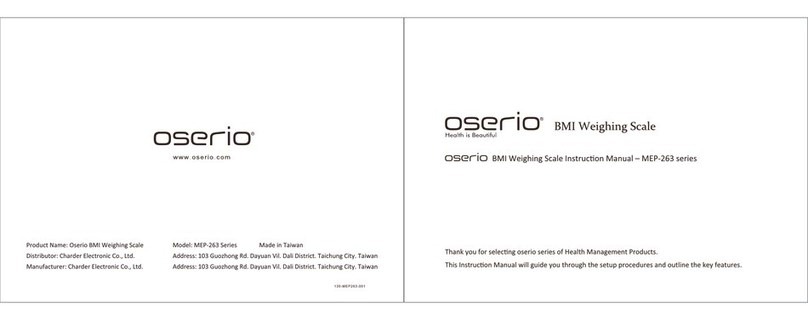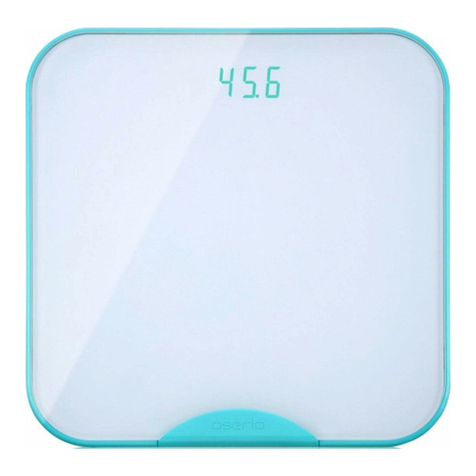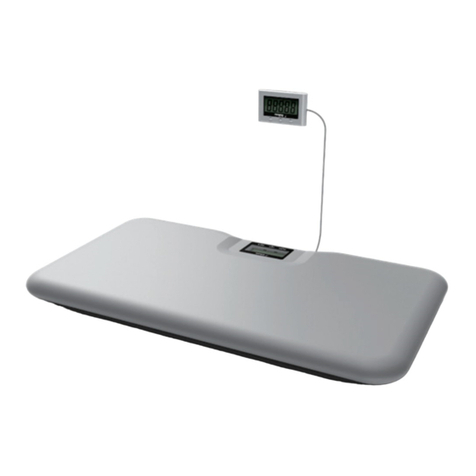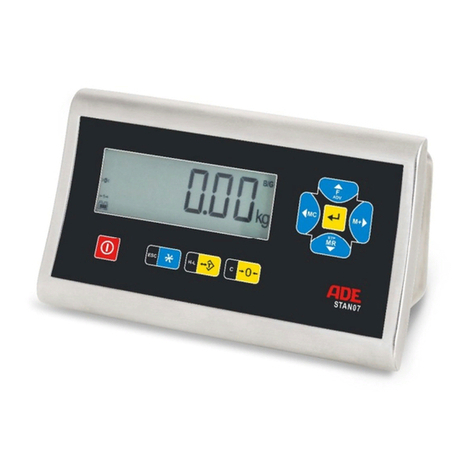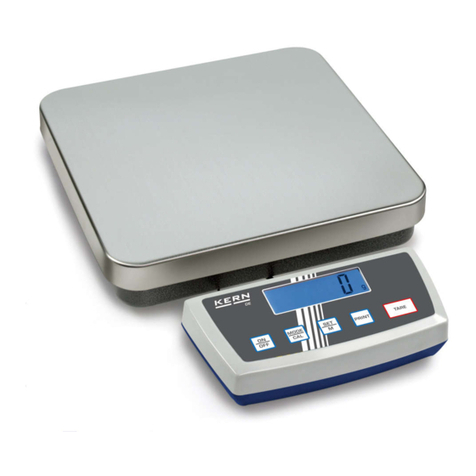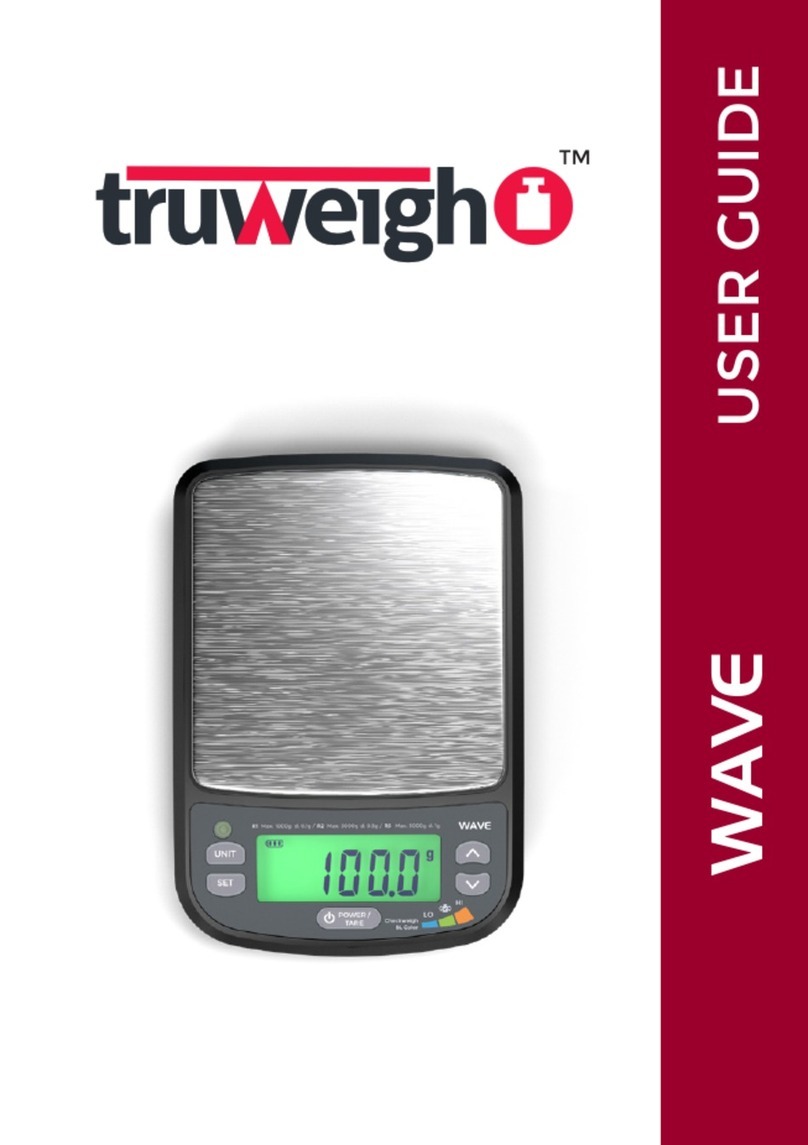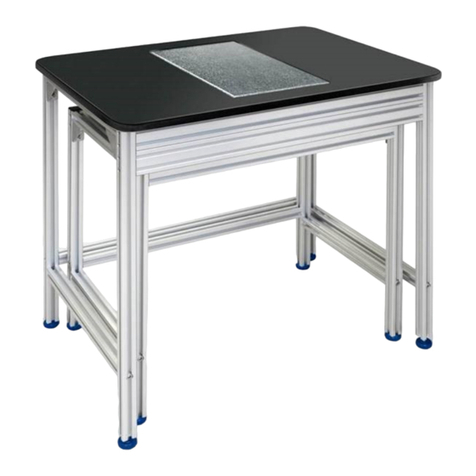
13
How to Use
3.6 About Bioelectrical Impedance Measurement
The FSC-330 uses Bioelectrical Impedance Analysis (BIA) to calculate body composion. At its core, BIA
operates by treang the human body as an electrical conductor within an alternang current circuit,
from which the alternang current resistance and impedance is measured.
Kushner RF, Clinical characteriscs influencing bioelectrical impedance analysis measurements, 1996
2
L
A
The measurement current flows from one lower limb through the lower abdomen and then into the other lower limb, and the
bioelectrical impedance is measured. For reference, the impedance measurement methods for the legs are shown in the diagram.
Using a combinaon of exisng populaon data and in-house research, body composion analysis formulas can calculate results
based on the Impedance, Height, Gender, Age, and Weight of the subject. These algorithms are formulated with reference to
"gold standard" measurements such as Dual-Energy X-ray Absorpometry (DXA) to confirm viability and accuracy.
Impedance
For best results, body composion analysis via BIA should be conducted under specific condions. Inconsistent measuring
condions will affect the accuracy and validity of BIA results, and interpretaon of body composion. The informaon below
regarding the effect of various factors on measurement results is largely sourced from related research by Kushner et al .
Measurement Rules
2
Before measurement, please take note of the following:
1.Do not exercise or perform strenuous physical tasks before measurement.
Strenuous physical tasks and exercise can result in a temporary change in body composion measurements. As BIA analyzes electrical
impedance in the body, acvies that might affect impedance (e.g. increased perspiraon, dehydraon, blood circulaon) may affect
measurement accuracy.
14
How to Use
3.6 About Bioelectrical Impedance Measurement
R Gallagher, M & Walker, Karen & O'Dea, K. The influence of a breakfast meal on the assessment of body composion using bioelectrical impedance. European journal of
clinical nutrion. 52. 94-7.
3
4Oshima Y & Shiga T. Within-day variability of whole-body and segmental bioelectrical impedance in a standing posion, European Journal of Clinical Nutrion 2006, 60, 938-941
2.Affect of food and drink on measurement results.
Ingeson of food and drink can affect impedance and weight, and thus analysis results. This change generally lasts 2-5 hours aer
each meal. For most accurate results, BIA measurements should ideally be conducted in a fasng state (e.g. before breakfast) .
3.Do not shower or bathe directly before measurement.
Perspiraon can result in a temporary change in body composion measurements, as the accuracy of BIA depends largely upon
interpretaon of measured impedance values, which are affected greatly by hydraon levels.
4.Perform the measurement under normal temperature condions (24-28°C)
Extreme temperatures (both hot and cold) can result in temporary physiological changes. For example, excessive sweang due to heat
can cause increased impedance measurements, resulng in a higher fat calculaon. For best results, measurements should be conducted
in an environment between 24-28°C.
5.Remove shoes and socks before measurement.
Shoes and socks will interfere with the electric current, making measurement inaccurate or in some cases, impossible.
6.Avoid physical contact with other people during measurement.
Because BIA measures the impedance encountered as the electric current travels through the subject's body, if another individual is
touching the subject, the electric current may pass through the other individual, causing inaccuracy in measurement results.
7.Measure height accurately.
Inaccurate height input will affect esmaon of body composion.
8.Perform the measurement in the morning.
As a general rule, BIA measurements should be performed in the morning to minimize the influence of acvity throughout the day on measurements.
3
4














